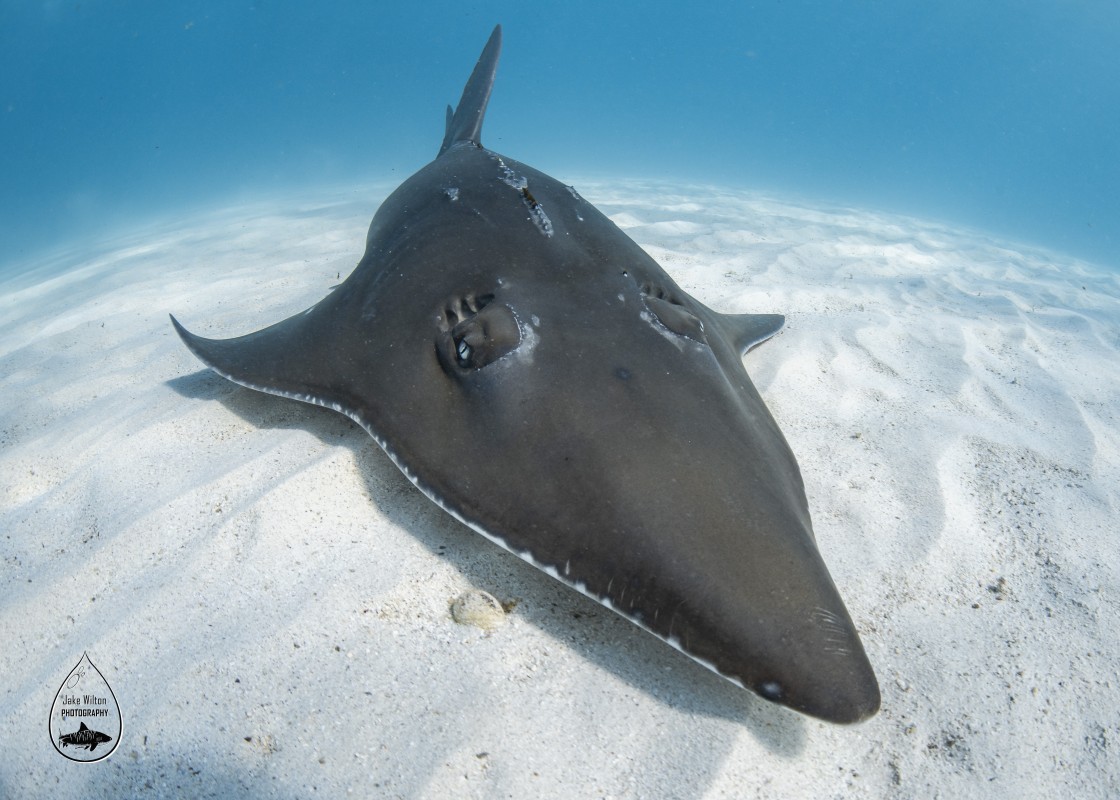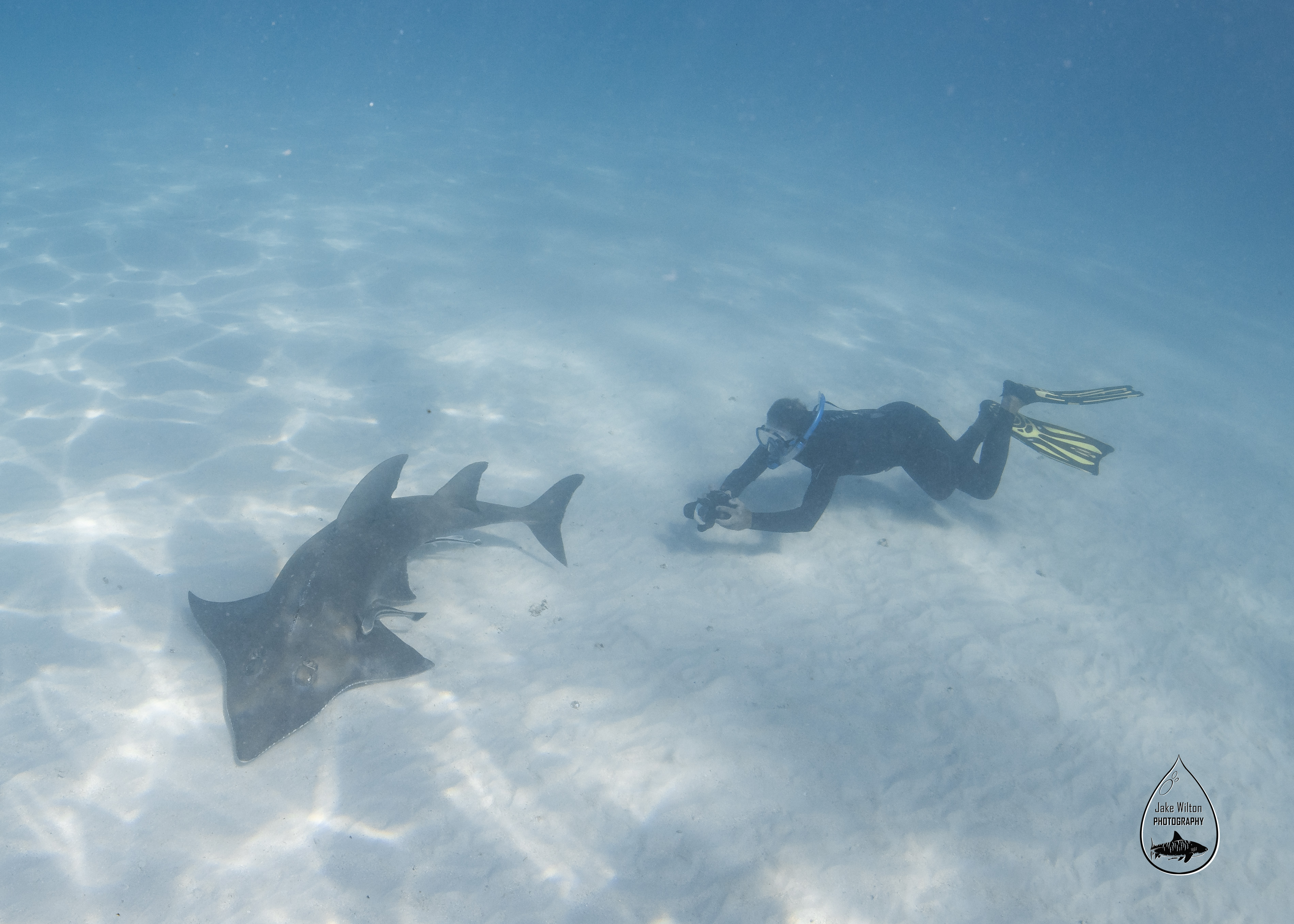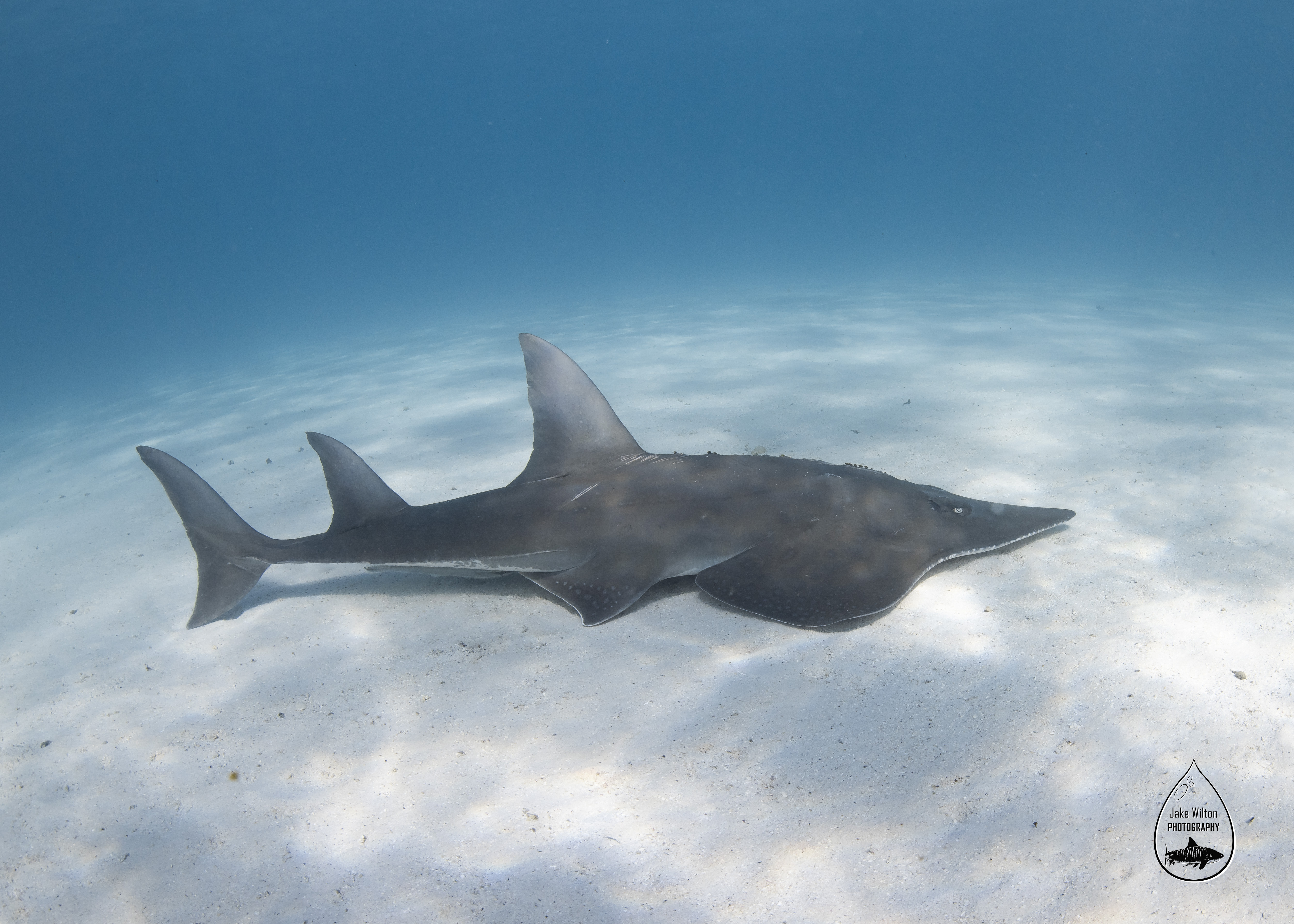Guitara the Giant Guitarfish of Ningaloo Reef
A Q&A with Underwater Photographer Jake Wilton on changing people's perceptions of sharks

Tell us about yourself and your work at Ningaloo Marine Interactions
My name is Jake Wilton and I work as an underwater photographer on the Ningaloo Reef in Coral Bay, Western Australia. I first learnt to dive in 2007 at the age of 15 and have worked as a Divemaster/Instructor since 2009 logging over 3,500 dives.
Since moving to the Ningaloo Reef in 2016 I have developed a passion for underwater photography and freediving.I currently work onboard Ningaloo Marine Interactions as the onboard professional photographer, where I work daily with manta rays, tiger sharks and other marine megafauna found on Ningaloo Reef.

Tell us about your most memorable underwater shoot
I don’t know if I have one moment that stands above the rest, but one of my most memorable would be the time we had a 30-minute swim with a huge 4m female tiger shark in about 3m of crystal clear water. Everyone on board was able to get in and spend some time with “Alberta” and it was incredible to witness first hand the change in perception about tiger sharks amongst all 20 guests. We went from a group of people full of fear to a group completely in awe & full of fascination. The buzz on the boat was incredible and in one moment we wiped a lifetime worth of fear and misconceptions and replaced them with respect and fascination for one of the world’s most misunderstood animals. The interaction was completely natural. No Bait in the water, no splashing or chasing the shark. She stayed because she was comfortable with our presence.
What’s so special about the Giant Guitarfish and the one you regularly encounter at Ningaloo Reef?
I have actually been incredibly lucky to dive with guitarfish regularly over the last 14 years. They are a common sight back home where I grew up in NSW and we also see them here on Ningaloo Reef. As such, I didn’t realise just how incredibly rare they have become around the world. They are usually quite shy animals and prefer to move away from divers but like all animals, they have very unique personalities and some can be very curious. That's why this particular ray we have nicknamed “Guitara” is so special. She is so comfortable with the presence of divers that she will actually come over to have a closer look at you when you dive down to the bottom. It makes you question what you think you know about intelligence. We have an animal that is now seriously threatened with extinction because of humans and yet she has no fear and welcomes us into her world. She is a crowd favourite on our tours and hopefully, she gets to live out her life safely in the protection of the marine park. Not so many of her kind are so lucky.

In an extraordinary encounter, you recently freed a Giant Manta Ray from a hook and fishing line, two items listed in the Dive Against Debris® Top 10 List of marine debris found underwater, do you often see the impact of marine debris on marine wildlife?
Freckles was one of the few lucky animals that could be saved from the impacts of humans on the oceans. Over the years I have seen more and more animals becoming entangled with fishing line and hooks. The fishing culture is growing in Australia and more people are getting bigger boats so the once hard to reach areas are now accessible to recreational fishing. The marine life are running out of safe places to live.
We have an increasing problem on Ningaloo Reef with fishing because the reef is becoming more accessible for tourists with fishing boats. Over 90% of our bay which is a world heritage listed marine park, is open to fishing and has no boat traffic speed limits. It is home to whale sharks, manta rays, humpback whale mothers and calves, and countless other endangered species including the guitarfish and giant shovel nose ray which are all in increasing danger of entanglements and boat strikes.
{"preview_thumbnail":"/sites/www.diveagainstdebris.org/files/styles/video_embed_wysiwyg_preview/public/video_thumbnails/mkkPDd0pZA4.jpg","video_url":"https://www.youtube.com/watch?v=mkkPDd0pZA4","settings":{"responsive":1,"width":"854","height":"480","autoplay":0},"settings_summary":["Embedded Video (Responsive)."]}
How can underwater photography and shark and ray tourism help the environment and ocean conservation in particular?
I believe underwater photography and shark tourism are some of the strongest tools in educating people about how beautiful these animals are and the threats they are facing. Over my 10 years working in shark tourism I have seen a huge change in people's perceptions of sharks. It is rare to see a kid under 16 scared of sharks. There is only fascination and excitement. Whereas the older generations are still convinced sharks are out to get them.
Once people see sharks with their own eyes they forget about the irrational fears that have been driven into us from a young age and they are changed forever.
We have an incredible opportunity on the tours to educate the public on the threats to our oceans and change the perceptions they have on animals. In the general day to day life, you are facing a losing battle but once you take them into the water with a shark for the first time they are completely captivated and then become more open to what you are trying to say to them. The more people we can help educate, the closer we can come to saving these beautiful animals.




